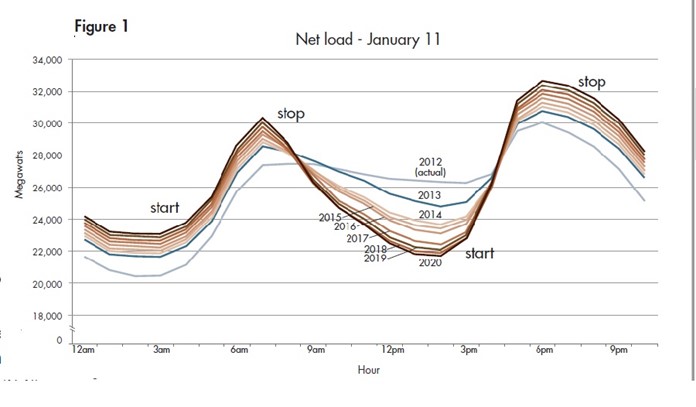STRIDE - Preparation and Research for Reports by Bay Zoltan LTD
17-02-2021
The Hungarian STRIDE partners at Bay Zoltan LTD have started the preparation of the first two reports of the project with an international desktop study. The most interesting research conducted so far was in relation to the so-called ''duck curve'', which illustrates the challenge of integrating intermittent resources like wind and solar power into existing energy storage infrastructure and consumption habits, as well as the European H2020 BRIDGE project. Bay Zoltan LTD has also started to monitor national policy documents as well as national funding opportunities within their research.
Desktop research has led to insights in relation to the flexibility of grids, as demonstrated through reports on the California Independent System Operator (CAISO) from 2016 (including energy predictions until 2025 and 2030) – this publication is referred to as the ''duck curve'' paper. This is because, in locations where substantial amounts of solar electric capacity has been installed, the amount of power that must be generated from sources other than solar or wind displays a rapid increase around sunset and significant peaks in the mid-evening hours, producing a graph that resembles the silhouette of a duck. In many energy markets worldwide — including those in Hungary — peak energy demand occurs after sunset (or in winter), when solar power is no longer available.

Figure 1: The Duck Curve
Blue curve: Demand for electrical power
Brown curve: Supply of electrical power from dispatchable sources
The European Commission initiative, BRIDGE, unites Horizon 2020 Smart Grid and Energy Storage projects to create a structured view of overlapping challenges encountered in the demonstration projects and may serve as obstacles to innovation. The living documents and other policy related collections are available on the project webpage, and serve as a good source of information on smart grids and energy storage.
The BRIDGE project fosters continuous knowledge-sharing amongst projects, thus allowing them to deliver conclusions and recommendations about the future exploitation of the project results, especially in relation to: Business Models, Consumer Engagement, Data Management and Regulations. The BRIDGE initiative is charged with preparing reports and formulating recommendations for the European Commission on various themes linked to the future of the energy sector. Additionally, task forces have been launched after the 2019 BRIDGE General Assembly to address the specific themes of Energy Communities, Replicability/Scalability Analysis and Joint Communication.
Finally, the Hungarian NRDIO office announced the results the call funding opportunity for energy communities earlier this January. The call for proposals addresses the implementation of a pilot project to support the establishment and operation of Energy Communities, while exploring the potential of energy communities, aggregation and active user behaviour (as well as the difficulties/constraints) and proposing the necessary policy improvements. The funded project can serve as an additional Good Practice to look to within the research conducted for the STRIDE project.
Note: Thumbnail Image : The Hungarian Grid system (source: http://www.energiainfo.hu/ )
